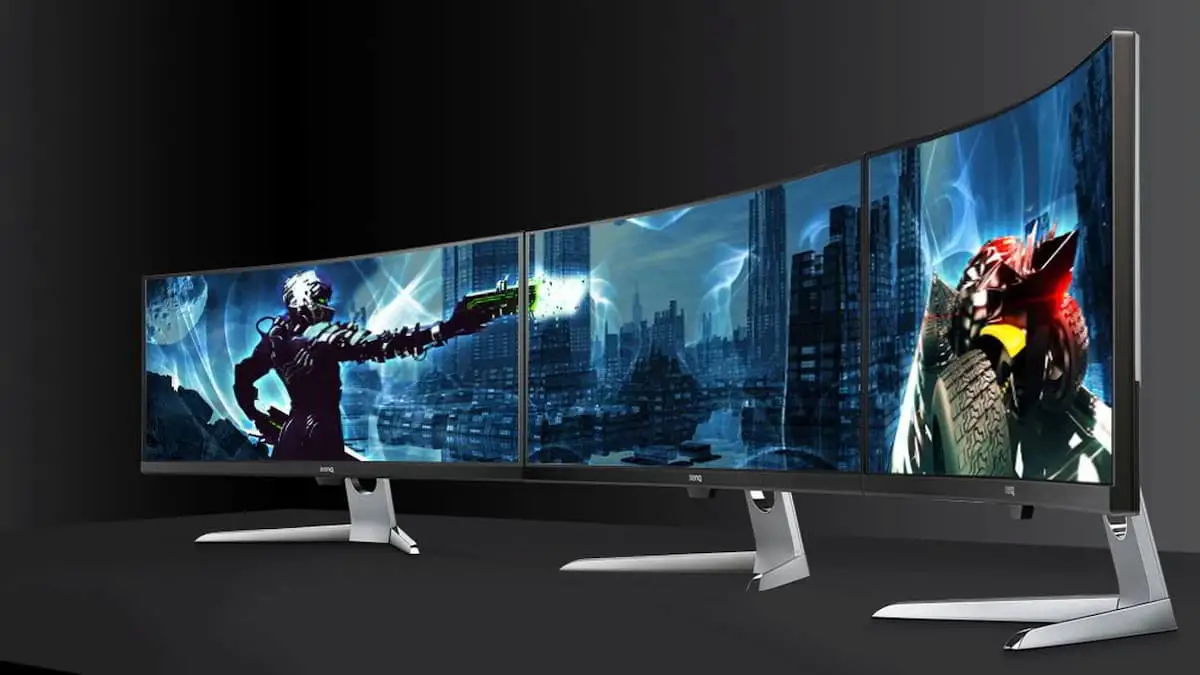In today’s tech-driven world, the evolution from single to dual monitor setups has become a noteworthy trend, especially among professionals and gamers. This shift prompts a crucial question: Does the expansion of our digital workspace with multiple monitors truly enhance productivity and gaming experiences, or is it veering towards unnecessary complexity? More to the point, is there a better solution in ultrawide monitor setups? I think there might be.
For context, my journey with monitor setups has been quite insightful. I’ve gone from a small single display to dual monitors to ultrawide. With a single monitor, I’ve always found my productivity is often higher. There’s a certain level of concentration that comes with the limited real estate of a single screen, something that gets diluted when you have multiple displays. In gaming, too, while the primary screen is the center of the action, the second monitor sometimes remains underutilized. That, for me, raises the issue of whether a second screen is really necessary most of the time.
Why Dual Monitor Setups are Great
That being said, the advantages of dual monitors are tangible. In my professional life, the ability to have multiple applications open simultaneously, each on its own dedicated screen, significantly boosts multitasking. It’s convenient to have a document open on one screen with reference materials on another or to monitor communication channels like Slack and email continuously.
The benefits extend to gaming as well. A dual-monitor setup allows for a more engaging and interactive experience. You can play a game on one screen while having guides, streams, or chat windows open on the other. This setup enhances the gaming experience, making it more multifaceted and connected. It’s awesome for those who like to stream on platforms like Twitch.
Yet, the dual monitor setup is not without its challenges. Each additional screen brings potential distractions when you’re not gaming or mucking around. When it comes to work, the trick lies in striking a balance between the advantages of additional monitors and the need to maintain focused productivity. It’s about optimizing the use of screen space without falling into the trap of visual clutter or divided attention.
Ultrawide Might Be Better
An ultrawide monitor offers an interesting middle ground. It provides a broad, uninterrupted canvas that can mimic the expanse of dual monitors without the physical separation. A typical 34-inch ultrawide monitor boasts a resolution of 3,440 x 1,440, providing about 1.3 million additional pixels compared to a standard 27-inch office monitor. This extra width isn’t just for aesthetics; it’s incredibly functional. In my daily work, I use this additional space to juggle various windows and applications without reducing the size of the primary app I’m focused on. It’s perfect for side-by-side comparisons of documents, editing photos, or coding while viewing a website preview in another window.
In gaming, ultrawide monitors offer an immersive experience, with a wider field of view that can be particularly engrossing in cinematic titles. However, it’s essential to note that not all games support ultrawide resolutions, which can limit its appeal. For example, playing the likes of Starfield recently, I had to use a third-party custom tool to get the setup working properly. That’s an added layer of annoyance when you’re trying to install and play a game for the first time.
Interestingly, the ultrawide format aligns well with most movies filmed in a wide aspect ratio. This means smaller or no horizontal bars, offering a more immersive cinematic experience. However, the rise of vertical video formats like those popularized by TikTok and YouTube Shorts presents a less-than-ideal viewing experience on ultrawide displays due to significant letterboxing. But who’s really watching those on a PC anyway, right?
Ultimately, the choice between dual monitors, a single screen, or an ultrawide display is not just a matter of personal preference but also of the specific requirements of one’s work and play. In my experience, while dual monitors offer increased versatility, a single monitor can enhance focus, and an ultrawide monitor provides an immersive, expansive view. The optimal setup aligns best with your individual productivity needs and gaming preferences, balancing the benefits of additional screen space with the potential for distraction.
This article was written by Monitors Hype editor Toby Dawson.
